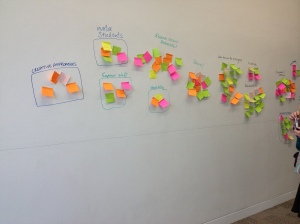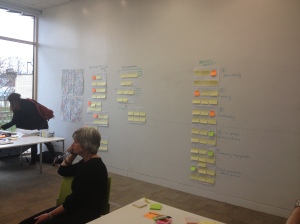It has been nearly five months, I realise, since I started my new project, and I have yet to formally introduce it to the public. There are reasons for this. Much of the past five months has involved rather more administrative work discussing the project than actual research. And even then there doesn’t seem to be a great deal to show for it. The website is still being built, I am still working out the nuts and bolts of the project’s centrepiece, the team is still being recruited. But last week we made the first formal appointment to that team, a skeleton website should be up and running soon, and we are on the cusp of the new teaching semester, so now seemed a propitious moment for slightly more formal introductions. So here goes.

Fundraising Poster for the British Red Cross Star & Garter Home
Men, Women and Care: The gendering of formal and informal care in interwar Britain is a European Research Council Starting Grant funded research project based in the School of History at the University of Leeds. Over five years, it will explore the ways in which the State, charities and, above all, the family provided medical and social care to disabled ex-servicemen in the aftermath of the First World War, particularly the relationships which developed between these three groups in the course of care provision. It asks how State, medical and charitable institutions, often dominated by men, interacted with the wives, mothers and sisters who found themselves caring for men who had suffered life-altering wounds and illnesses as a result of their war experiences and how these interactions shaped social and cultural understandings of care-giving as a gendered practice.
At the heart of the project is the creation of a database of the material held in PIN 26, the section of The National Archives which contains nearly 23,000 First World War pension award files. This is not a digitisation project; many files contain medical records which it would not be ethical to digitise. Rather, the database will collect demographic information and give an indication of what supplementary material the files contain. This will allow for both quantitative analysis of the entire sample, as well as helping researchers identify relevant files for further qualitative analysis. The project will work closely with The National Archives to enable the database to be made freely and publicly accessible upon completion.
In addition to working with the National Archives, the project is looking to build relationships with local, national and international partners to explore how this research might shape and be shaped by contemporary understandings of medical and social care provision, particularly in relation to the role of the family. The project itself is a central element of the Medicine and War strand of the Legacies of War research and engagement hub based at the University of Leeds, and we are looking forward to building on the strong relationships and innovative work that Legacies of War has developed since its inception.
The Men, Women and Care team, at present, is made up of me as principal investigator and Alexia Moncrieff, who will join as postdoctoral researcher fellow over the summer. Currently completing her PhD on the Australian Army Medical Services in the First World War at the University of Adelaide, Alexia’s research for the project will focus on the ‘Overseas’ subsection of PIN 26, to explore how ideas of distance shaped the provision of care by different institutions. We are also in the process of recruiting two PhD candidates who will start their research on related questions in October. Given the richness of the PIN 26 archive, as well as the range of related material in the archives of local government, charitable institutions and personal narratives, I am very interested in hearing from anyone who would like to collaborate or contribute.
As I say, there will be, in the near future, a project website and Twitter feed (@WW1PensionsCare – as soon as Twitter allows me to register it). Please bookmark and follow us to see how we develop and do get in touch if you want to find out more.





